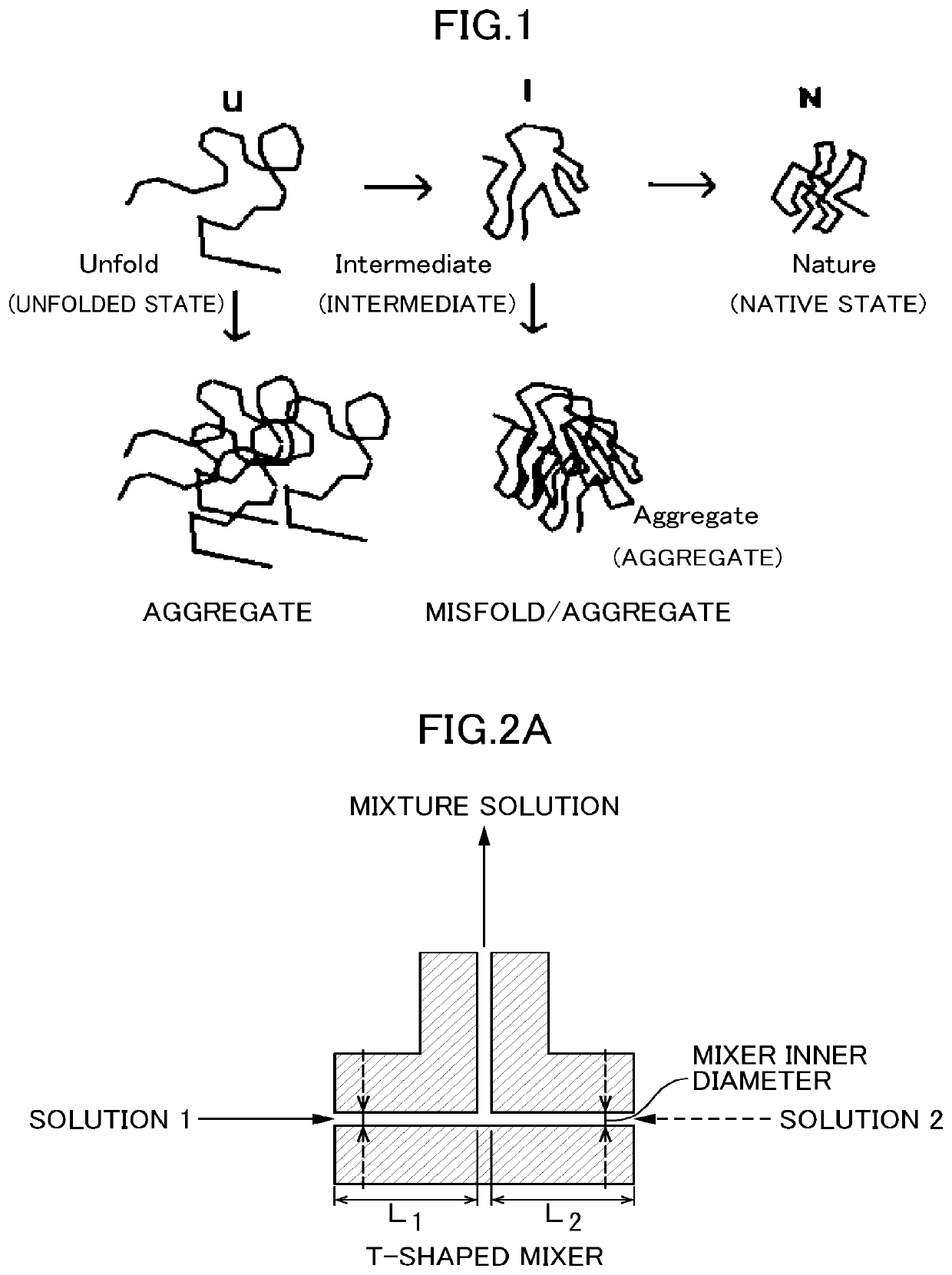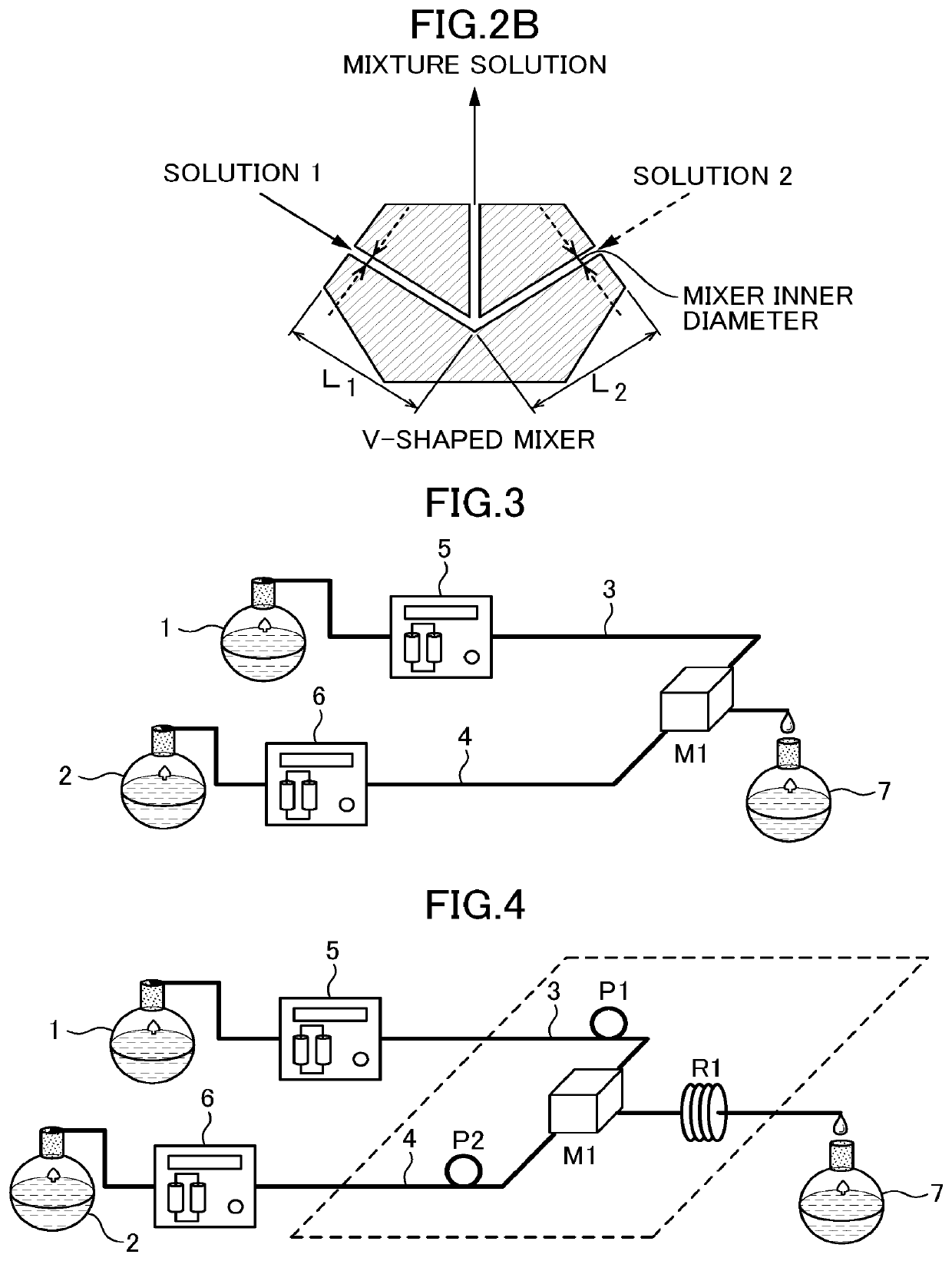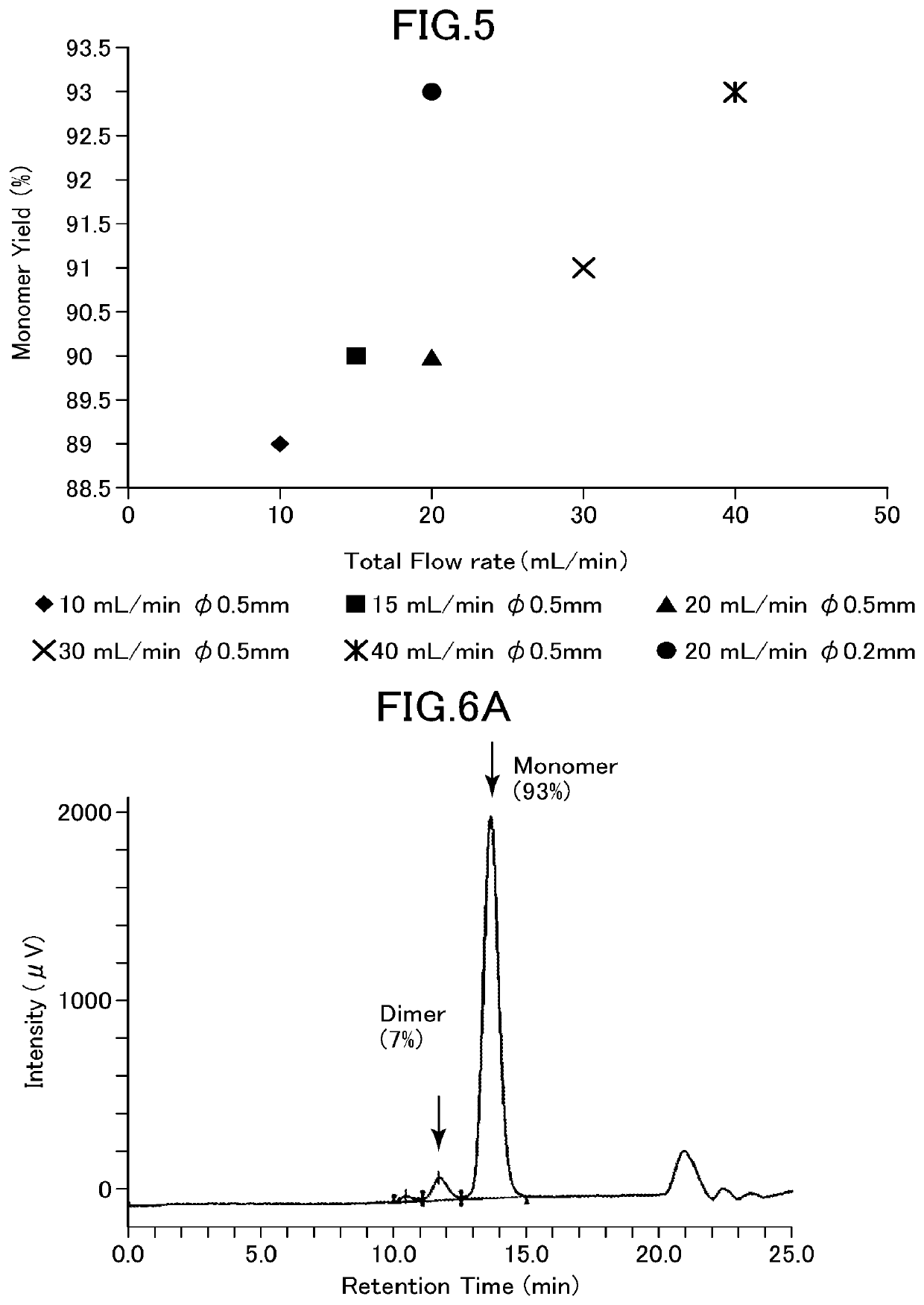Method for producing refolded protein by using flow microreactor, and protein refolding apparatus
a technology of refolding protein and flow microreactor, which is applied in the directions of peptides, organic chemistry, transportation and packaging, etc., can solve the problems of insoluble microorganisms and loss of activity, precipitation in a considerable amount, and unsatisfactory yield of active proteins, etc., to achieve accurate control of refolding conditions and high yield
- Summary
- Abstract
- Description
- Claims
- Application Information
AI Technical Summary
Benefits of technology
Problems solved by technology
Method used
Image
Examples
example 1
[Example 1] Refolding of rhIL-6 (1)
[0126]In Example 1, the effects of the buffer flow rate and the micromixer flow path shape on the yield of refolded rhIL-6 were examined.
[0127]The denatured rhIL-6 solution A prepared above was mixed with a buffer (50 mM sodium acetate, pH 4.3) using an FMR apparatus and diluted 20-fold (rhIL-6 concentration 0.175 mg / mL). In the obtained sample, the component peak was quantified by gel filtration chromatography (Superdex 75 10 / 300 GL (GE Healthcare)) capable of separating the target product and byproducts. The supernatant in an amount of 20 μL was subjected to gel filtration HPLC (column, Superdex 75 10 / 300 GL, manufactured by GE Healthcare; developing solution 0.1 M sodium phosphate, 0,2 M arginine hydrochloride, 1 M urea, pH 6.8; flow rate 0.8 mL / min; detection method, UV absorption at 225 nm and 280 nm; quantitative standard, purified rhIL-6) to quantify rhIL-6 having a monomer structure, a dimer, and an aggregate structure.
[0128]The buffer and ...
example 2
[Example 2] Refolding of rhIL-6 (2)
[0130]In Example 2, refolding was performed using the FMR apparatus of the present invention, a batch method or gel filtration column, and the refolding rates were compared.
[0131]The solubilized solution of denatured protein and buffer were the same as those used in Example 1.
[0132]Refolding according to the present invention was carried out in the same manner as in Example 1 except that a type 3 micromixer was used, the flow rate of the buffer was set to 38 mL / min, and the flow rate of the denatured protein solution A was set to 2.0 mL / min.
[0133]In the batch method, the denatured rhIL-6 solution was added dropwise to a reactor in which a beaker filled with a dilution buffer had been stirred with a magnetic stirrer. The scale of the solution was 10 mL.
[0134]Buffer exchange using a gel filtration column was performed by the method described in BIOTECHNOLOGY AND BIOENGINEERING, VOL. 62, NO. 3, Feb. 5, 1999.
[0135]FIG. 6 shows the results. FIG. 6A show...
example 3
[Example 3] Refolding of rhIL-6 (3)
[0136]In Example 3, the refolding rate when the protein was denatured with guanidine was compared between the present invention and the batch method.
[0137]Experiments were carried out in the same manner as in Example 2 except that the denatured rhIL-6 solution B was used as the solubilized solution of denatured protein and 50 mM sodium acetate (pH 5.0) was used as the buffer.
[0138]Table 4 shows the yields of refolded rhIL-6 (Monomer) and aggregates (Dimer) of rhIL-6 when the denatured rhIL-6 solution B and the buffer were mixed. From Table 4, it can be understood that the formation of aggregates can be suppressed and the yield can be improved by high-speed mixing by FMR as compared with the case of mixing by batch method.
TABLE 4Comparison of Refolding Yields by Guanidine DenaturationConditionMonomer (%)DimerFMR91.2 8.8Batch Refolding77.122.9
PUM
| Property | Measurement | Unit |
|---|---|---|
| Time | aaaaa | aaaaa |
| Pressure | aaaaa | aaaaa |
| Pressure | aaaaa | aaaaa |
Abstract
Description
Claims
Application Information
 Login to View More
Login to View More - R&D
- Intellectual Property
- Life Sciences
- Materials
- Tech Scout
- Unparalleled Data Quality
- Higher Quality Content
- 60% Fewer Hallucinations
Browse by: Latest US Patents, China's latest patents, Technical Efficacy Thesaurus, Application Domain, Technology Topic, Popular Technical Reports.
© 2025 PatSnap. All rights reserved.Legal|Privacy policy|Modern Slavery Act Transparency Statement|Sitemap|About US| Contact US: help@patsnap.com



